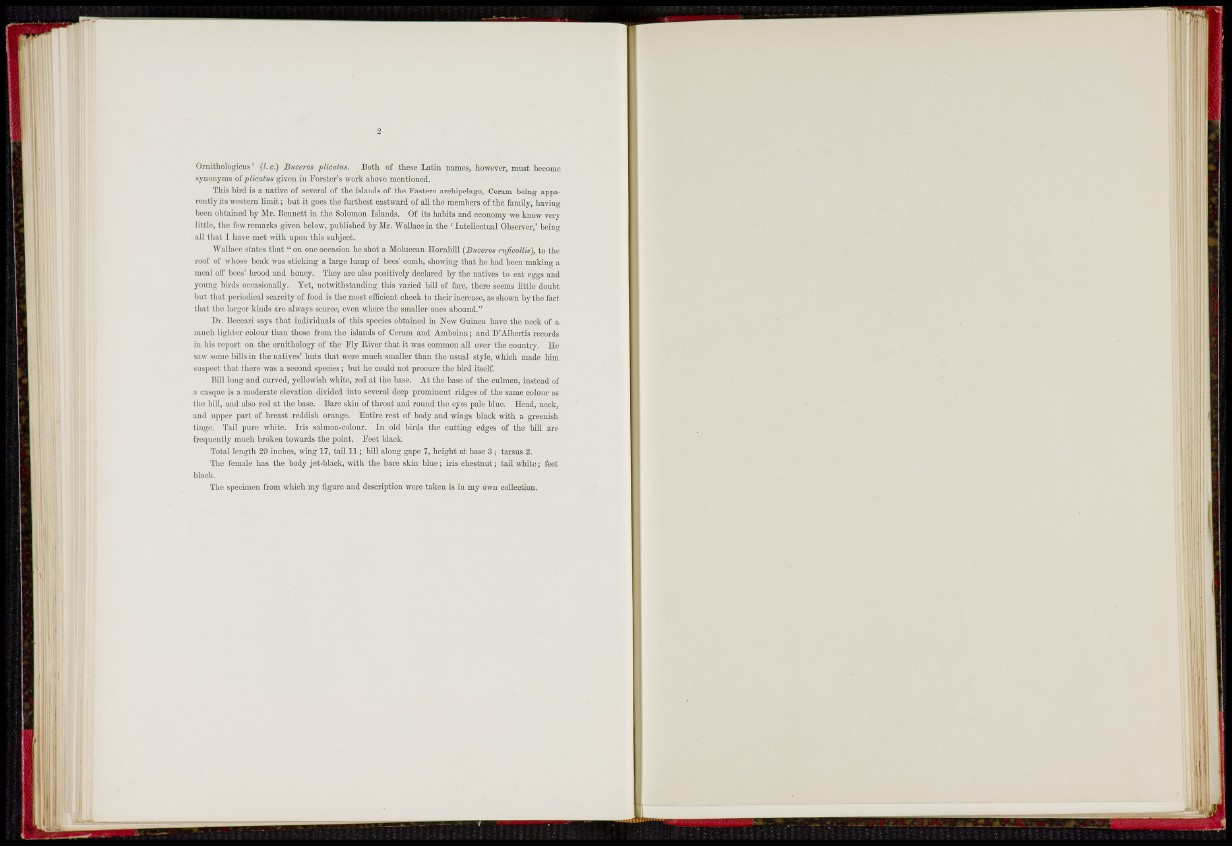
Ornithologicus' {I. o.) Buceros plicatua. Both of these Latin names, however, must become
synonyms oiplicatm given in Forster's work above mentioned.
This bird is a native of several of the islands of the Eastern archipelago, Ceram being apparently
its western limit; but it goes the furthest eastward of all the members of the family, having
been obtained by Mr. Bennett in the Solomon Islands. Of its habits and economy we know very
little, the f(iw remarks given below, published by Mr. "Wallace in the ' Intellectual Observer,' being
all that I have met with upon this subject.
Wallace states that " on one occasion he shot a Moluccan Ilornbill {Buceros mJicoUis), to the
roof of \vhosc beak was sticking a large lump of bees' comb, showing that he had been making n
meal off bees' brood and honey. They are also positively declared by the natives to eat eggs and
young birds occasionally. Yet, notwithstanding this varied biH of fare, there seems little doubt
but that periodical scarcity of food is the most efficient check to their increase, as shown by the fact
tliat the larger kinds are always scarce, even where the smaller ones abound."
Br. 13eccari says that individuals of this spccics obtained in Now Guinea have the neck of a
much lighter colour than those from the islands of Ceram and Amboina; and D'Albertis records
in his report on the ornithology of the Fly Kivcr that it was common all over the country, lie
saw some l)ills in the natives' huts that were much smaller than the usual style, which made him
suspect tliat there was a second species; but he could not prociu'e t)ic bird itself.
Bill long and curved, yellowish white, red at the base. At the base of the culmen, instead of
a casque is a moderate elevation divided into several deep prominent ridges of the same colour as
the bill, and also red at the base. Bare skin of throat and round the eyes pale blue. Head, neck,
and upper part of breast reddish orange. Entire rest of body and 'wings black with a greenish
tinge. Tail pure white. Iris salmon-colour. In old bnds the cutting edges of the bill are
frc(iuciitly much broken towards the point. Feet black.
Total length 29 inches, wing 17, tail 11; bill along gape 7, height at base 3 ; tarsus 2.
The female has the body jct-black, with the bare skin blue; iris chestnut; tail white; feet
black.
The specimen from which my figure and description were taken is in my own collection.